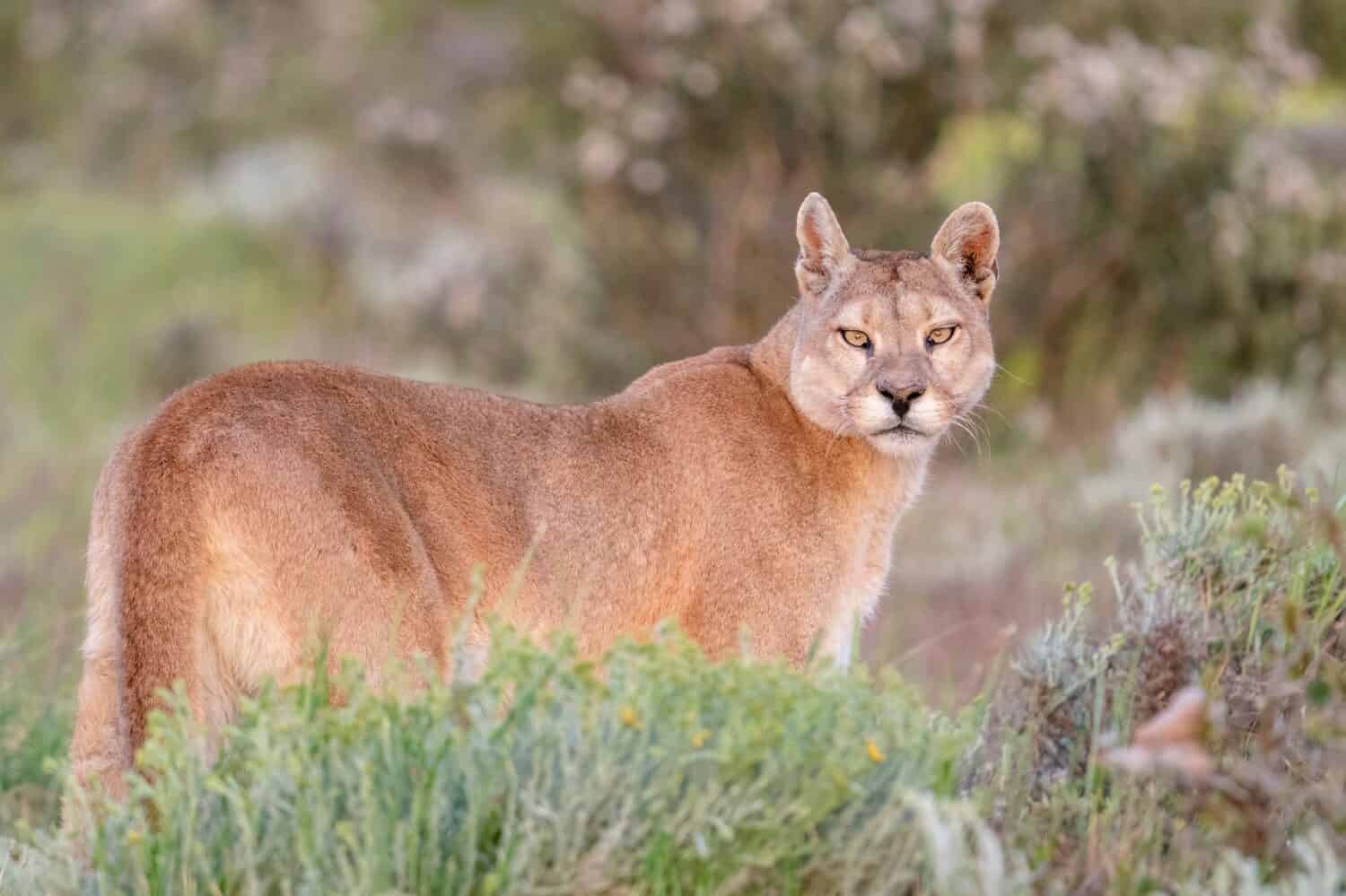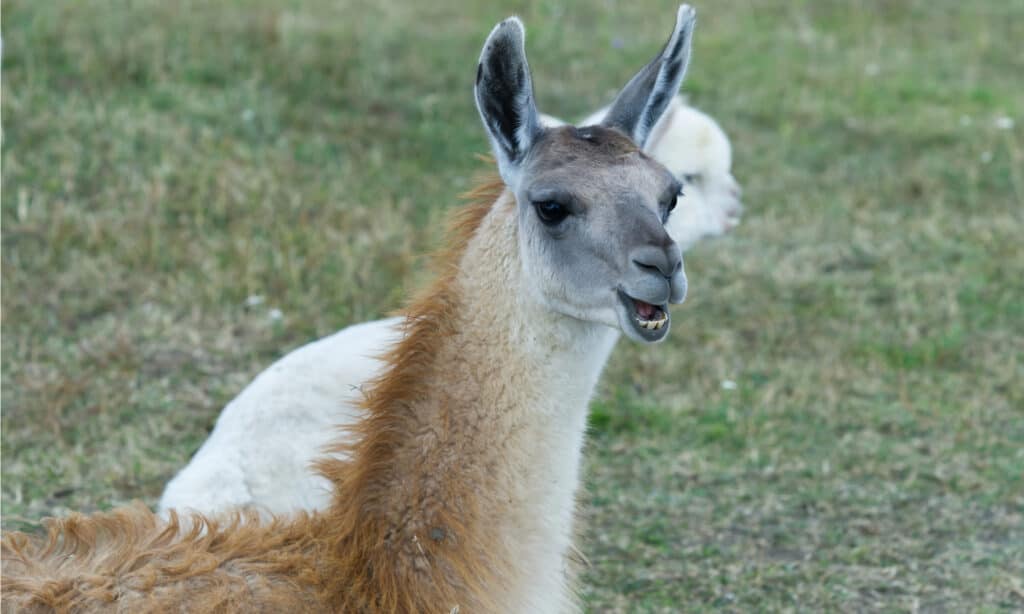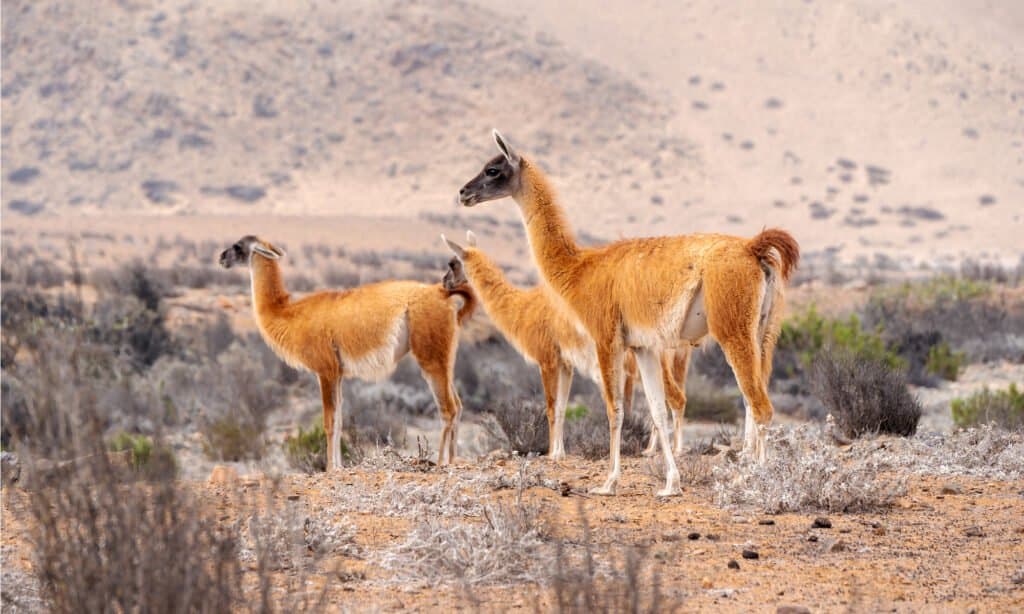Continue reading for our analysis...

This puma isn’t afraid of anything. Watch as the large cat attempts to take down prey that’s over double her size!
The BBC clip gives background to the video by showing separate snippets of footage showing a puma and her cubs. The narrator explains that she is in desperate need of prey to feed them. Clips of a large alpaca-like animal called a guanaco are then shown, illustrating how large they are in comparison to the puma.
The next part of the video shows a group of guanacos standing on a hillside. One of them gives out a warning cry, but it is too late as the puma is already chasing a guanaco. After a very short chase, the puma grapples the guanaco, attempting to bite and claw at its neck.
Reeling in pain, the guanco bucks and gallops in the air while attempting to kick off the big cat. After a short struggle, it is kicked off to the ground. The puma’s nearby children run to join the situation, also trying to take down the guanaco.
At the end of the day, the cub’s efforts are no use as the guanaco runs to live another day. The clip ends by showing the mother puma licking her harsh battle wounds as her cubs snuggle up close by.
What is a Guanaco?

Guanacos are unique animals that are native to the Andes Mountain range. Although they are relatively small, they are fairly sizable against predators like pumas.
©Valeri Pavljuk/Shutterstock.com
In the clip that can be found below, the narrator mentions a unique animal called a guanaco. Although they look relatively familiar, guanacos are unique animals that can often be mixed up with their more common relatives. Many people point to the fact that animals such as alpacas, camels, and llamas have a striking similarity to guanacos.
As a basic description, guanacos are slender animals that have long necks. They tend to live in groups comprised of a dominant male and many females and children. Although their range may vary, guanacos generally live in South America, specifically near the Andes Mountain range.
In comparison to similar animals such as alpacas and llamas, guanacos are slightly smaller. Additionally, they are not typically domesticated and are much older in the evolutionary timeline.
How Do Pumas Hunt?

Pumas are incredible hunters who use a few different techniques to stalk and capture prey.
©iStock.com/SandmanXX
Being one of the most deadly big cats in the world, pumas are incredible hunters who use a few different techniques to stalk and capture prey. Although not every hunt is a successful one as depicted in the video below, pumas are incredibly calculated and prepared!
First of all, pumas begin their hunt by stalking their prey. To do this, they move slowly and lower their bodies to the ground in an attempt to blend in with the landscape.
After they get close to their desired target, pumas will spring into action, sprinting toward their prey until they can land a swing or a bite. Once they get a bite, they will either try to grapple the prey to the ground or choke it out, as shown in the video below.
In the end, pumas combine their unique traits of stealth and strength to help them take down prey that is multiple times their size!
Is it Normal for Pumas to Attack Guanacos?

In southern South America, pumas prey on guanacos.
©oscargutzo/Shutterstock.com
In Patagonia, specifically Torres del Paine, Chile, which is believed to have a higher concentration of pumas than any other location throughout the world, the guanaco is the puma’s primary source of food. Pumas, in addition to Andean foxes, are a natural predator of the guanaco. Pumas will stalk their prey for over an hour from quite a distance before sneaking up from behind and attempting to crush the animal’s throat with their powerful jaws.
Although both species have coexisted in South America for nearly one million years, the high level of guanaco mortality can be attributed to the puma. As a result, the population of these camelids has decreased significantly over the years.
Thank you for reading! Have some feedback for us? Contact the AZ Animals editorial team.







